Mixing plants with pets
Tugging at her mother’s sleeve, a little girl finally succeeds in gaining her much-awaited escort to the pet department at their local, full-service garden center. Puppies, lizards, hamsters and birds create a wagging, scurrying, fluttering swirl of music around her, but her eyes are drawn to the rabbit pen. The little girl’s mother finally acquiesces to her daughter’s pleas for a pet, and a tiny white bunny soon finds itself in a box that is gently supported in the little girl’s arms. Her mother purchases all the supplies she needs, according to the guidance of a pet department salesperson, including cedar shavings for bedding. Cedar shavings are known among experienced veterinarians and rabbit aficionados to be poisonous to rabbits. The staff member, however, is not aware of this, and the woman, looking to the store for her care information, does not know the first thing about rabbits. .
Three days after purchasing the animal, its eyes are glazed over, it is unresponsive, and it has lost all signs of interest in anything. The woman rushes it to the vet, her child in tears, and is told that the rabbit is in shock and must stay overnight. One day later, after X-rays and medication, the rabbit dies, leaving the mother with a $250 vet bill and the little girl with a broken heart..
The vet says that the rabbit had poor muscle development, which means it may not have been weaned when it was sold to the garden center. It had also been very hot in the days leading up to the bunny’s death; the woman did not have air conditioning, and was not warned that rabbits are extremely sensitive to heat stress. It also could have been the cedar shavings. No one knows..
The garden center agrees to pay half of the vet bill, a goodwill measure that keeps the mother from wanting to boycott the store altogether, and allows her child to pick out a replacement for her deceased bunny. The $30 the store originally gained from the sale of the rabbit has just cost them $155. .
How much of this scenario could have been prevented if the garden center staff had been given thorough training on rabbit care or had refused to purchase rabbits from a breeder whose litter was not fully weaned? While this is a worst-case scenario, it can happen. If you think adding a pet or pet supply department to your garden center would be a good way to generate off-season sales, you may be right; just remember that there are a number of factors from animal health to your customer base to your market you should to take into consideration before making that decision.
Separating pets from plants
Integrating live pets into your store doesn’t just mean adding another area and more products; you also need to be ready to dedicate a separate, trained staff to your pet department. Alsip Home and Nursery Super Store, Frankfort, Ill., dedicates roughly 8,000 sq. ft. of its total 90,000 sq. ft. to pets and pet supplies, making this department virtually a separate business from the garden center and that’s exactly how owner Bill Christakes views it.
“Right away, we learned that we needed a separate manager for that department, and we’ve always treated it like a separate business on its own. You need to give it the proper space, the financial commitment, the time commitment and the management commitment it can be very good, but it’s like being in another business.” Christakes says that Alsip hires specifically for the pet area there is no departmental crossover and seeks out potential hires with pet experience or at least an interest in pets. The pet department staff is supplied with articles from trade magazines, and many of them attend pet industry trade shows to keep abreast of the latest pet information and products.
Just as crucial as having a trained and qualified staff is having a solid system in place for maintenance and buying from reputable suppliers. Daily cleaning of cages and tanks is a must to ensure healthy animals and prevent unsavory odors. “If you don’t take care of your live pets, it shows, and your customers are very aware of sick animals,” says Christakes. “If they see something that doesn’t look right, they get upset. We’re very careful to present a really good image of high quality. We buy from only a select few suppliers for live animals, and we make sure that they’re all well-bred and healthy. We try to eliminate problems ahead of time by starting with good animals.”
Even when all guidelines are followed and all precautions taken, problems can still occur. An animal may fall ill through something you never could have prevented and nothing your staff caused, and you never know what the animal will experience in its new owner’s care once it leaves your store.
Needless to say, you need to have a guarantee in place that will right the wrongs of breeding problems or other issues while limiting your liability. At Alsip, puppies receive a check-up from the store’s veterinarian before they leave the store, and the buying customer must sign a waiver acknowledging they understand they are taking responsibility of the animal and that they understand the store’s guarantee policy that the animal is covered by a 14-day, general health and a 1-year hereditary guarantee. For small animals, birds, reptiles and kittens, there is a 7-day replacement-only policy, and for fish, there is a 5-day guarantee with water sample, fish and cash register receipt. Any problems beyond these guidelines are dealt with on a case-by-case basis. “We’re very fair and very thorough, and we very seldom get to the point where [large problems] occur. It is a business that you really need to dedicate yourself to because those are the situations that you can get yourself into if you’re not careful,” advises Christakes.
Retailing live pets also requires proper licensing from the USDA office of the state your store is in. Carrying animals that are native to your state or any exotic animals also requires a special license.
Evaluating your market
Even if you have an immaculate business plan in place that includes a fully trained staff, a guarantee policy, a maintenance program, trustworthy and ethical breeders, and everything else needed to make your pet department successful, there are still macrocosmic factors to consider such as your competition and market to determine whether or not adding a pet department (live or not) makes sense. Are there large chain pet retailers in your area? Will your customer base support your inventory? Might there be better ways to encourage traffic in the off-season with your current retail focus?
There are differing opinions regarding the issue of whether pets and plants go together. Industry consultant Stan Pohmer is unwavering in his view of this issue. “Most of [the garden centers] get into it to try to draw traffic in the non-peak periods because it’s a frequent purchase. However, it doesn’t work. Take a look at Frank’s they went into pets heavily and then got out because it didn’t make sense. There’s no logical connection between dogs and cats and garden product. You can’t be a garden center and a pet outlet. It’s like saying I’m going to be a high-end retailer and also be a price leader. It’s a disconnect. You’re not consistent in the image you’re conveying to the consumer. So do I recommend it? Absolutely not.”
Alsip might disagree. The pet category has been a part of the store since its inception 32 years ago, and Christakes says they decided to integrate it to round out their annual business. Today, Christakes says his pet department generates approximately 10 percent of the store’s total profits, and Alsip’s original goal of using the pet department to draw year-round traffic has been successful. “It pays the expenses and bills and helps keep the cash flow going in the off-season, so there’s a lot of advantages. It brings in a lot of people, and they buy other products, too,” Christakes explains.
Alsip’s success at drawing in traffic is despite there being both a PetCo and PetsMart located within 5-6 miles of their store. Just as big boxes like Home Depot and Lowe’s challenge independents to offer specialty plant items, higher quality and better service, so do chain pet stores require the independent to lend a special “otherness” to its pet department. Christakes says Alsip offers products that the chains don’t carry to differentiate themselves, including puppies and other live animals. “The variety mix in our stores makes us kind of a destination operation. We take advantage of our traffic from our other businesses to sell some of our high-margin items.” While Alsip does compete price-wise with the chains, as far as mainstream products such as Iams and Science Diet dog and cat food, it is trying to promote more proprietary brands that offer higher margins and that are targeted at independents.
Judy Sharpton of Growing Places Marketing is not as adamant as Pohmer regarding the business sense of having a pet department, although there are situations where she calls the decision “questionable.” “If there is a customer base for both kinds of products,” she says, “then the garden center can think about it. But before they go and buy any of those products, they really should look at whether or not there’s a market.”
Sharpton recommends two preliminary steps to the garden center considering adding a pet department: First, she suggests that the garden center survey other stores and other places in their area where their customers could buy pet products instead of from their garden center; second, if the garden center surveys the market and discovers that there’s not a source for these products, then the garden center should ask its customers whether through a newsletter or checkout counter survey if they have a pet, where they buy their pet supplies from, and whether or not they are satisfied with that source. “I’d be willing to bet that in most cases, if the garden center goes through those two surveys, they’ll determine that [a pet department] is not something they need to allocate space for.”
But even then, you can be certain that you have a great market for your new pet department and do everything right, and to your dismay, your efforts can still hit the ground with a dull thud. Just ask Deborah Harrison, owner of Habersham Gardens in Atlanta. She used to have a pet supply department and phased it out after an 18-month, unsuccessful trial run. While she didn’t formally survey her customers, she knew her customers had pets.
“We invite our customers to bring their pets on leashes when they shop here, and so we didn’t actually survey our customers because we know how many pets come in a day. We just felt for sure the pet department was a natural.” Habersham carried high-end pet beds in frames, leashes, pet jewelry, pet toys and other dog and cat items. “We dedicated one of the coolest sections of our interior to the inventory, and it was well-merchandised and pricey. I invested in quite a bit of medium-price and high-end inventory, not the kind of thing you’d find at your local pet supply big box. We found that people loved it; they thought it was fun, but they didn’t buy it here. They just didn’t come to us for that,” Harrison lamented.
Despite the fact that her department was a flop, don’t try to tell Harrison that making a pet department part of the garden center doesn’t make sense. She still believes there is a natural link between animals and gardening. “People who love animals tend to love gardens, and I don’t know why that is, but that’s what I’ve found to be the case.” She is so determined to make it work, in fact, that she is planning on resurrecting her pet supply area in the future she’ll just do it a little differently next time. She says she’ll be careful to stay away from very high-end items because while they may be the most eye-catching products, a customer will take one look at the price and avoid the whole department.
For garden centers contemplating a move into the pet arena, Harrison suggests that they be very familiar with their market, within 10 miles or so, and what price points they’ll be competing against. “In a brand-new market, I think it’s important that you start off a little more conservatively. Don’t get the low-end stuff that consumers can find at the big box, but don’t invest too heavily in the very high-end product that will perhaps mark you as a really expensive pet place,” she advises.
Plants provide pull, pets, further profit
In Lake Forest, Ill., an affluent suburb of Chicago, Pasquesi Home and Gardens seems to have struck the right balance between product selection and price according to its market one where there are few chains to compete with and a customer base with more disposable income. The store carries high-end dog beds and other supplies, as well as many of the dog and cat food lines that can be found at pet store chains. Because they cannot compete on price, however, Owner Mike Pasquesi says they are trying to get into other food products that the chains don’t carry, such as holistic pet foods.
Pasquesi has noted a trend that pets are increasingly more important to people, who consider them a part of the family. “[The pet category] really goes hand in hand with our business,” he says. Unlike Alsip, however, Pasquesi’s pet department is not so much an off-season sales generator as it is an ancillary product category that boosts sales during peak times, when people are coming in to buy plants. “I think any sale you can get definitely helps you, but I can’t say it’s such a driving force that in October [customers] are only coming in to buy their pet supplies it’s just part of the whole package,” Pasquesi explains. And while there are some customers who visit Pasquesi once a month to buy their pet food, most are not drawn exclusively for pet supplies. “There’s only one department that really stands out that people will come in for, and that’s the plant department. I think for every garden center that’s the driving force.”






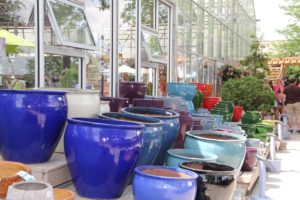
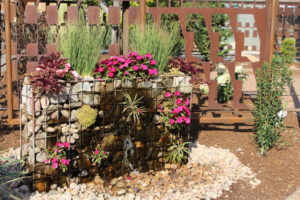
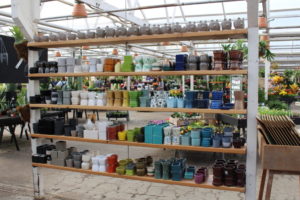
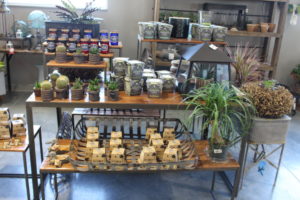
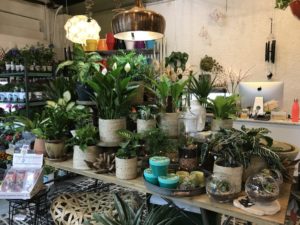
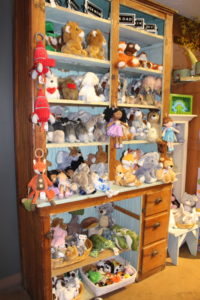
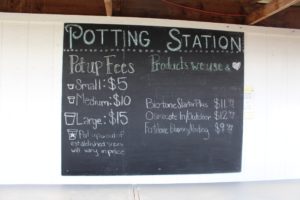

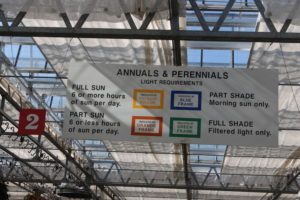

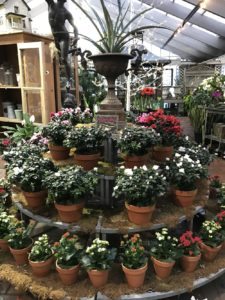
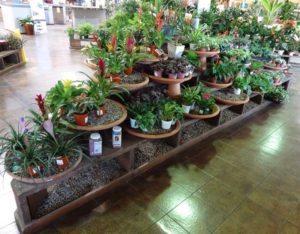
 Videos
Videos





